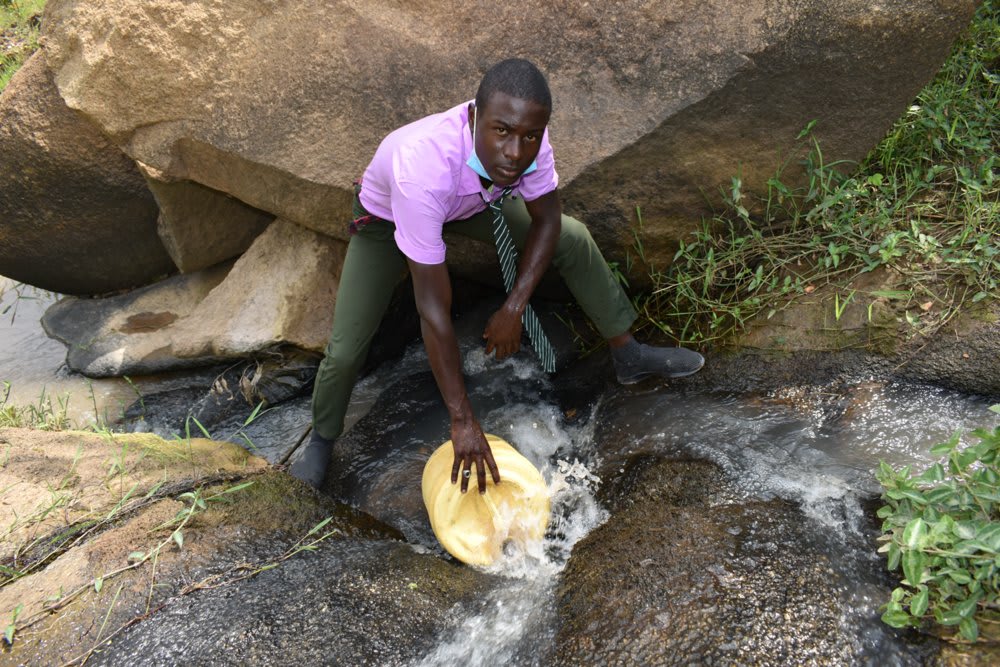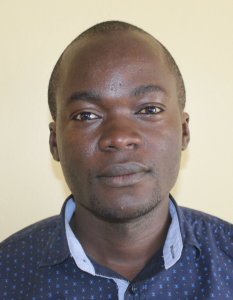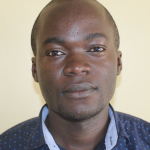"As students, we have really been affected due to the lack of clean and safe water in the school," said Mercy, who is 1 of 182 students and 15 teachers and staff that make up Muhaya Secondary School.
Founded in 2006 under the Church of God Kenya's sponsorship, Muhaya Secondary School has gradually grown in student population and academic achievements, including co-curricular activities such as scouting. But the school's severe clean water shortage is stopping it, and its students, from reaching their full potential.
The only water source on campus is a small plastic rain tank that students quickly deplete.
"As a school, we have undergone various challenges as a result of the water shortage," explained Principal John Otieno.
"Students have been forced to carry water from home, which has not only negatively impacted their academic work but also their discipline...Indeed, water is life. We shall really appreciate if a solution is found."
The "home" water students carry to school originates in an open stream in the valley. Depending on where students access the river, the terrain can be wet rocks with rushing water or slick muddy banks. Both are dangerous to students, especially as they try to leave the river with their heavy containers. There is no room for accidents.

Students start their day by going to the stream to fetch water and either returning home to transfer the water to a smaller container they can carry to school or by lugging their bigger container with them the whole way.
Mercy said the morning requirement to come to school with water takes up so much time that the students are often late to or entirely miss their morning lessons. The road to school is long, and their containers heavy.
When - not if - the water runs out during the school day, teachers have to send students out to fetch more. Teachers find they do not have enough time to cover their full syllabus, while students fall behind in their academic performance due to the lack of time in class.
The high rate of water-related illnesses further challenges students in their school due to drinking the river water, which is unquestionably unsafe for human consumption. Waterborne illnesses such as cholera and typhoid can be expensive to treat and physically debilitating, keeping students from their studies while seeking treatment and care. Pupils' families are struggling to pay these recurrent health bills.
Students' health is put at further risk by their inability to carry out necessary cleaning and hygiene tasks at school, including washing their hands.
"We are forced to do manual cleaning twice a week, hence raising concerns on our hygiene and standards," Mercy said. For example, the latrines should be cleaned at least once daily with so many students using so few toilets. And without handwashing, fecal-oral diseases compete with students' illnesses contracted directly from the unsafe drinking water.
The school is eager to disrupt its cycle of unsafe and insufficient water, absenteeism, and water-related illnesses among students. We are eager - and ready - to help them.
What We Can Do:
Rain Tank
A 75,000-liter rainwater catchment tank will help alleviate the water crisis at this school. The school will help collect the needed construction materials such as sand, bricks, rocks, and water for mixing cement. We will complement their materials by providing an expert team of artisans, tools, hardware, and the guttering system. Once finished, this tank will begin catching rainfall used by the school’s students and staff for drinking, handwashing, cooking, cleaning, and much more.
The school and we firmly believe that all of these components will work together to improve standards at this school, which will help lead to better student academic performance and unlock the potential for these students to live better, healthier lives.
Handwashing Stations
There is currently nowhere for students to wash their hands after using the latrines or before eating lunch, let alone the water.
The student health club will oversee the two new handwashing stations we will provide and ensure they are kept clean and in working condition. The club leaders will fill the handwashing stations with water daily and make sure they are always supplied with a cleaning agent such as soap or ash.
VIP Latrines
Two triple-door latrine blocks will be constructed with local materials that the school will help gather. Three doors will serve the girls, and three doors will serve the boys. All of these new latrines will have cement floors that are designed to be easy to use and to clean. And with a rain tank right on school property, there should be enough water to keep them clean.
Training on Health, Hygiene, COVID-19, and More
We will hold a one-day intensive training session with students, teachers, and parents. This training will cover a wide range of topics, including COVID-19 symptoms, transmission routes, prevention; personal and environmental hygiene; and the operation and maintenance of the rain tank, latrines, and handwashing stations. There will be a particular emphasis on handwashing.
Our team of facilitators will use various methods to train, including participatory hygiene and sanitation transformation and asset-based community development. We will initiate a student health club, which will prepare students to lead other pupils into healthy habits at school and home. We will also lead lectures, group discussions and provide illustrative handouts to teach health topics and promote acceptable hygiene practices within the school, including handwashing and water treatment. We will then conduct a series of follow-up training before transitioning to our regularly scheduled support visits throughout the year.

 Rainwater Catchment
Rainwater Catchment
 Rehabilitation Project
Rehabilitation Project




































